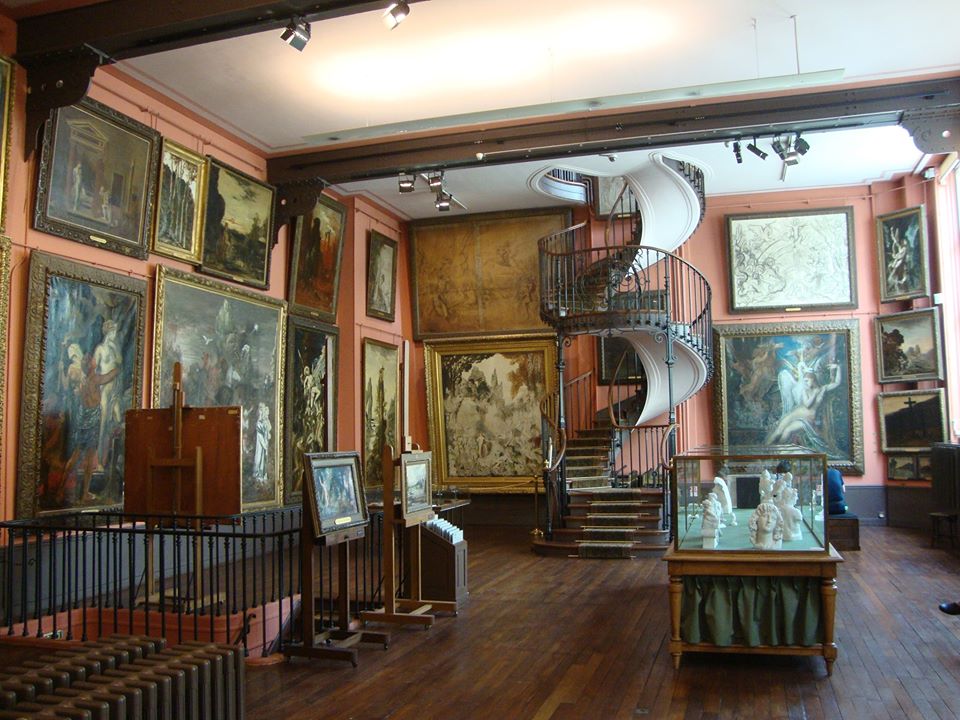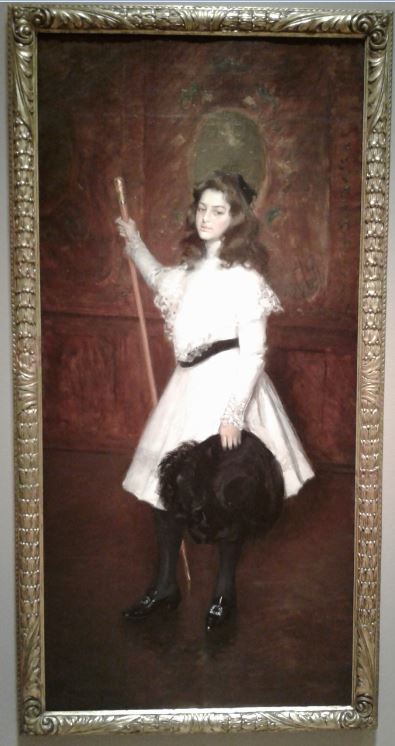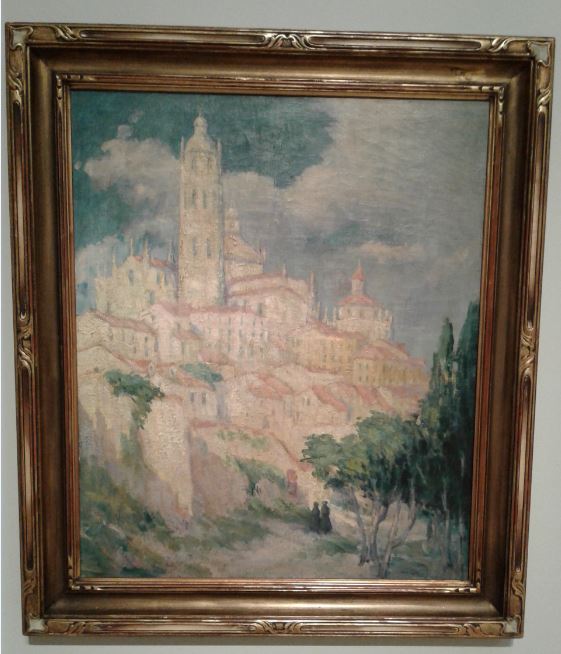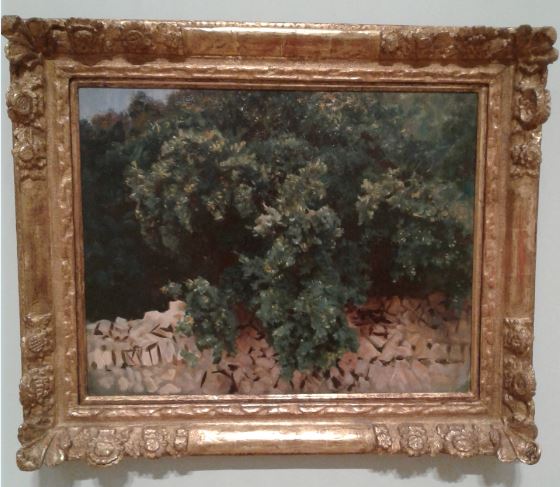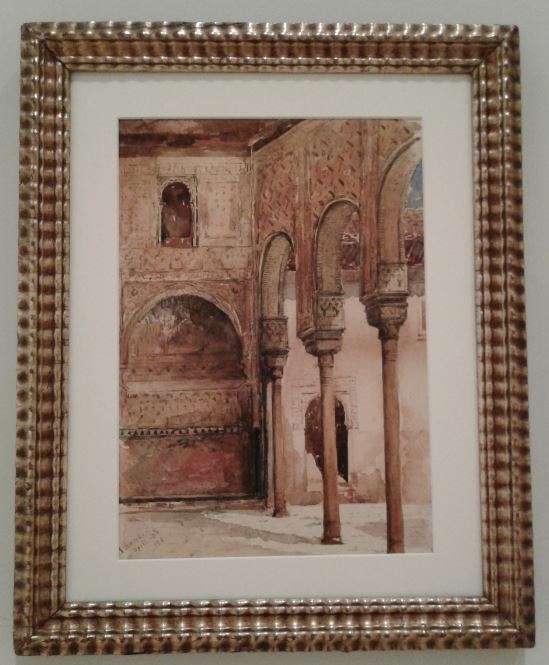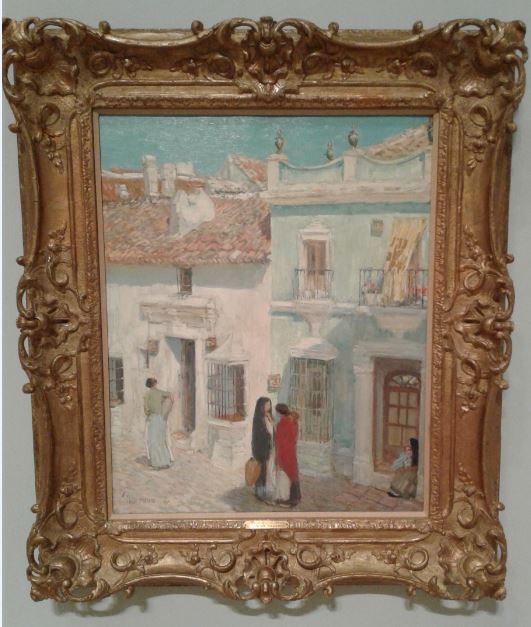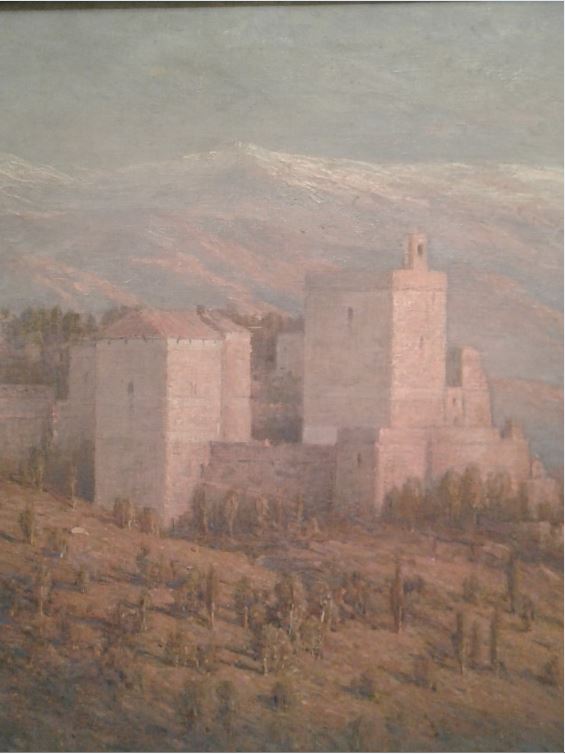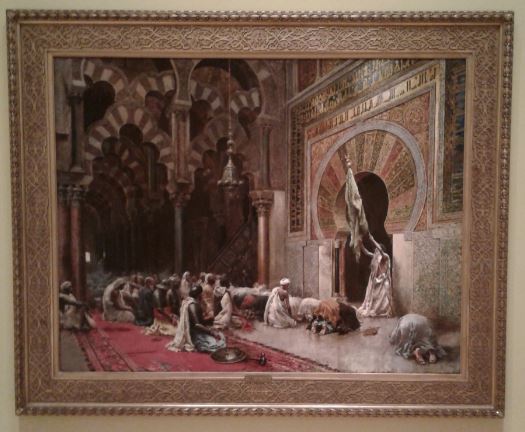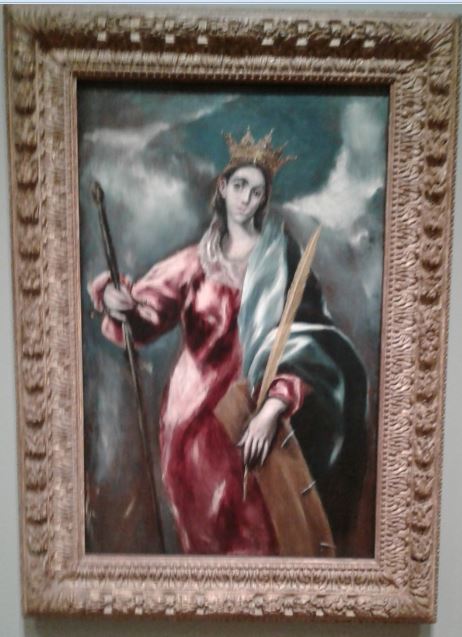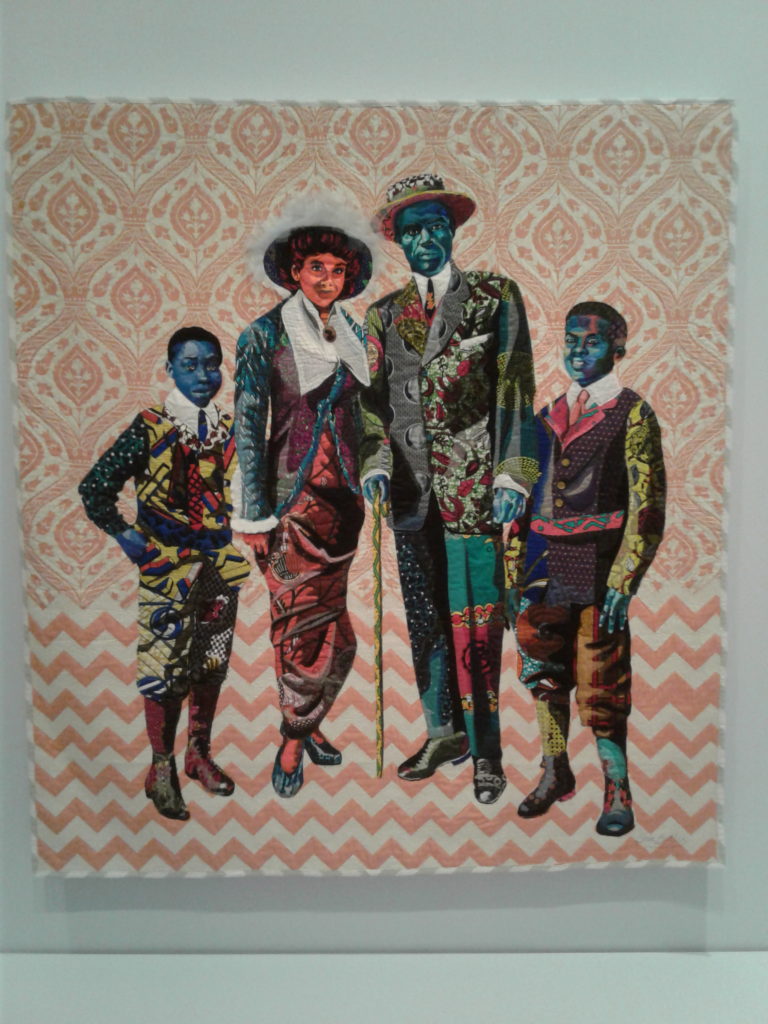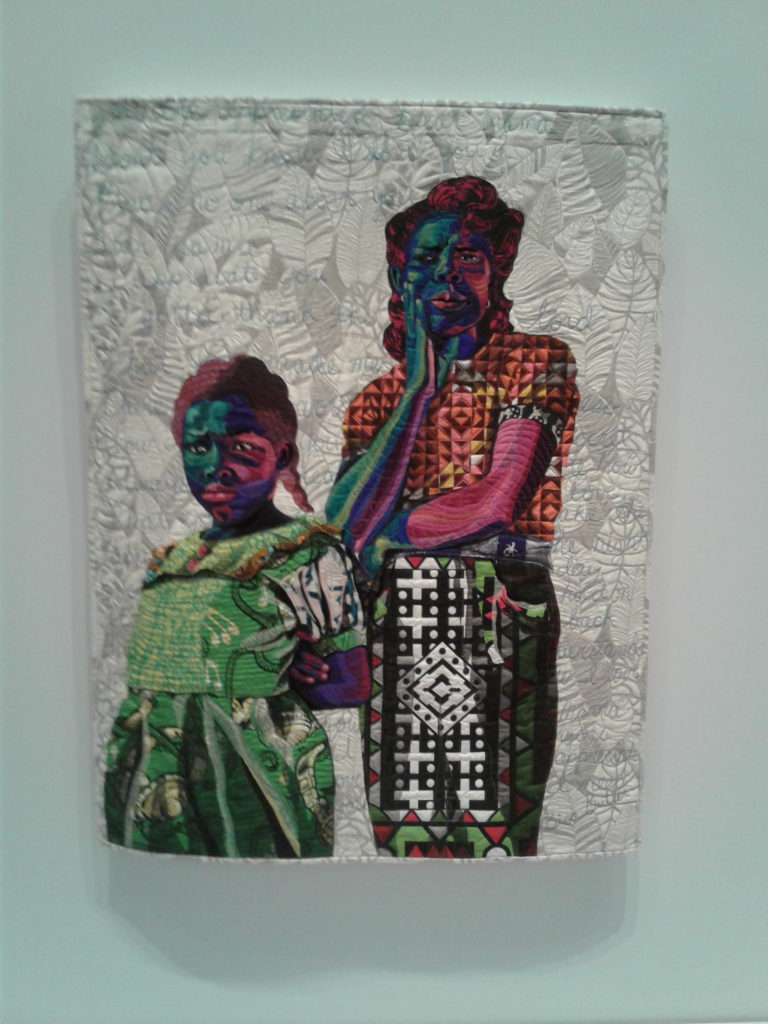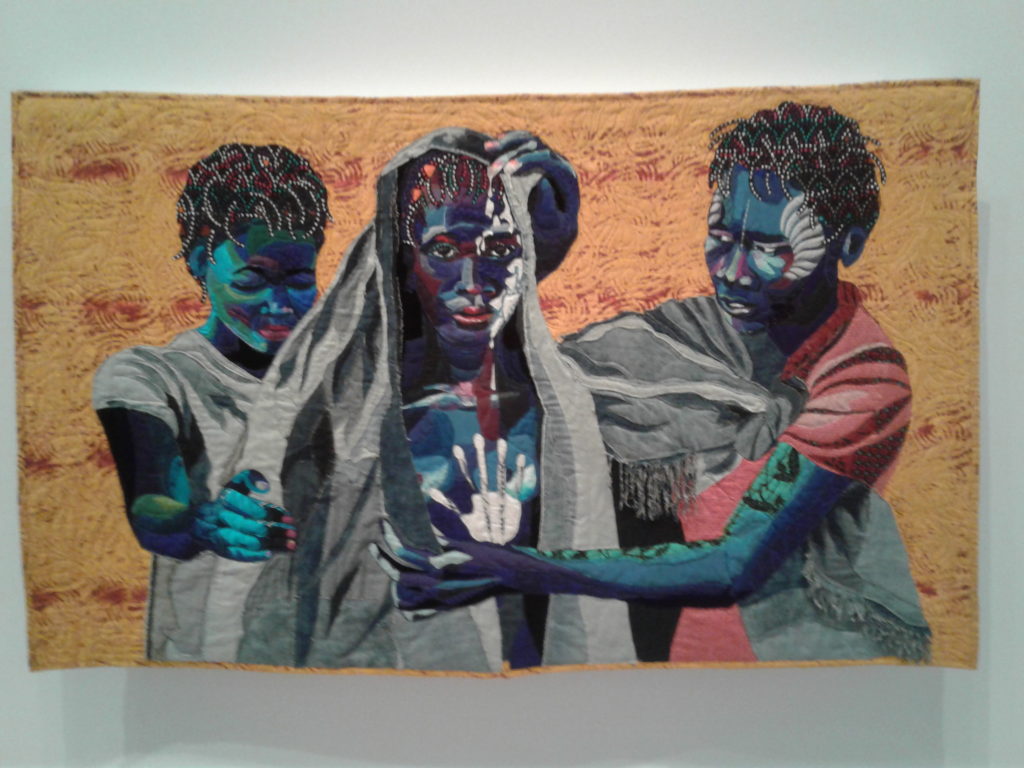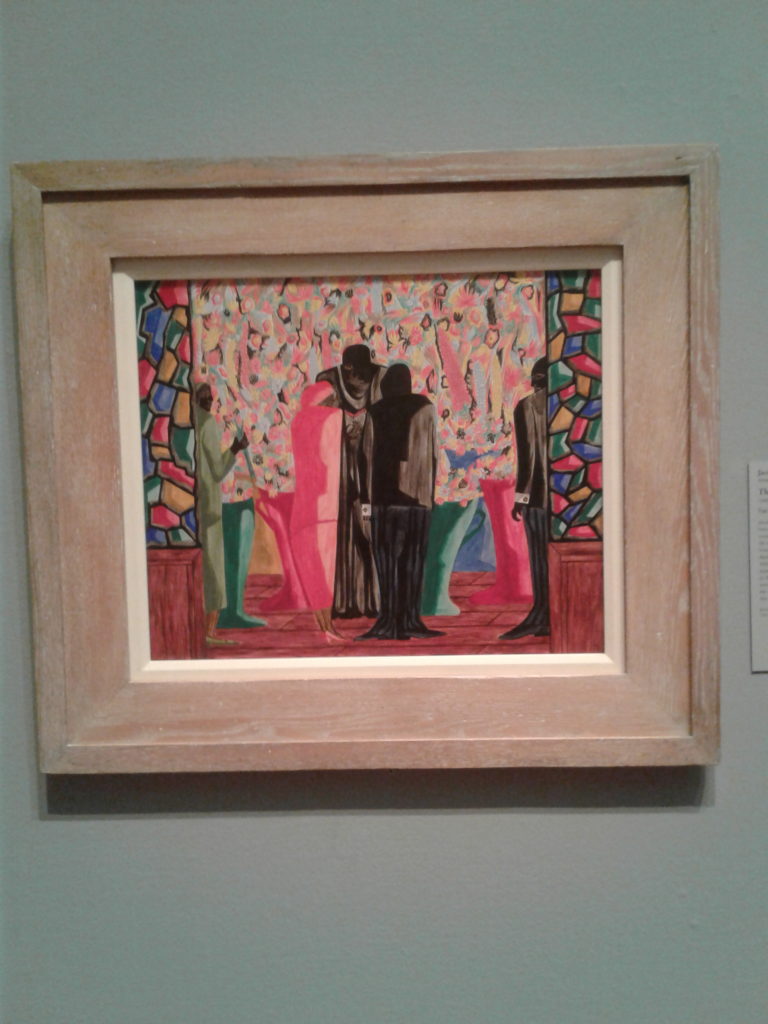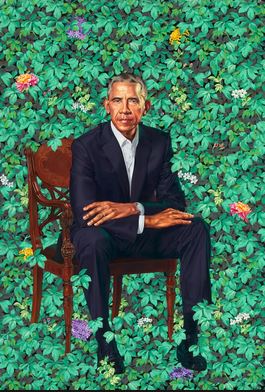Most of my adult life as an artist and follower of artists, Odilon Redon was my favorite (until I visited Gustave Moreau’s house museum in Paris that is. My front page photo may be a give away on my current favorite). So whenever I visit a new museum I search to see if they have any of his work. I have been rewarded a number of times and the Musee D’orsay has a number of more obscure treasure by Redon.
So when I saw an ad on social media for Collecting Dreams: Odilon Redon at the Cleveland Museum of Art it was time for a road trip!
CMA has a pretty significant holding of various Redon noirs (black drawings and prints). Reportedly the largest holdings in the United States. So this is a significant show for Redon fans. There are four color pieces, three of them in the CMA collection and one on loan. This oil painting on unprimed canvas of Andromeda is on loan from the Arkansas Museum of Fine Arts Foundation Collection. A stunning work that is 65 inches tall!
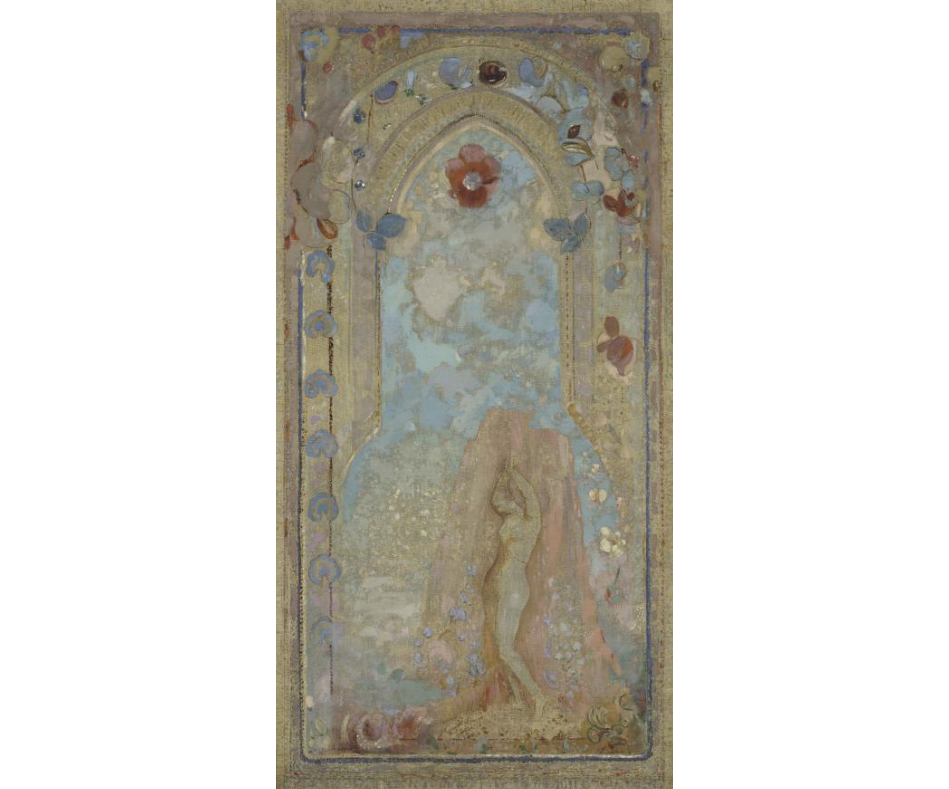
And one of the stand out displays is the wall containing the complete sets of the Apocalypse of Saint John, the Homage to Goya, The Haunted House, and the Temptation of Saint Anthony lithographic portfolios. And to see them side by side was quite a treat!
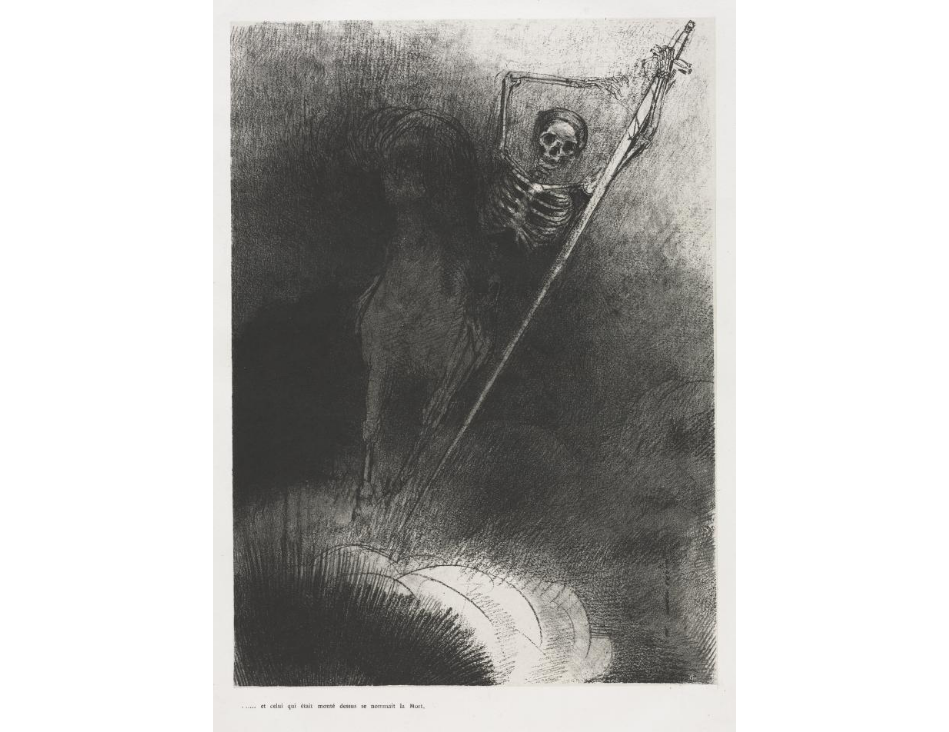
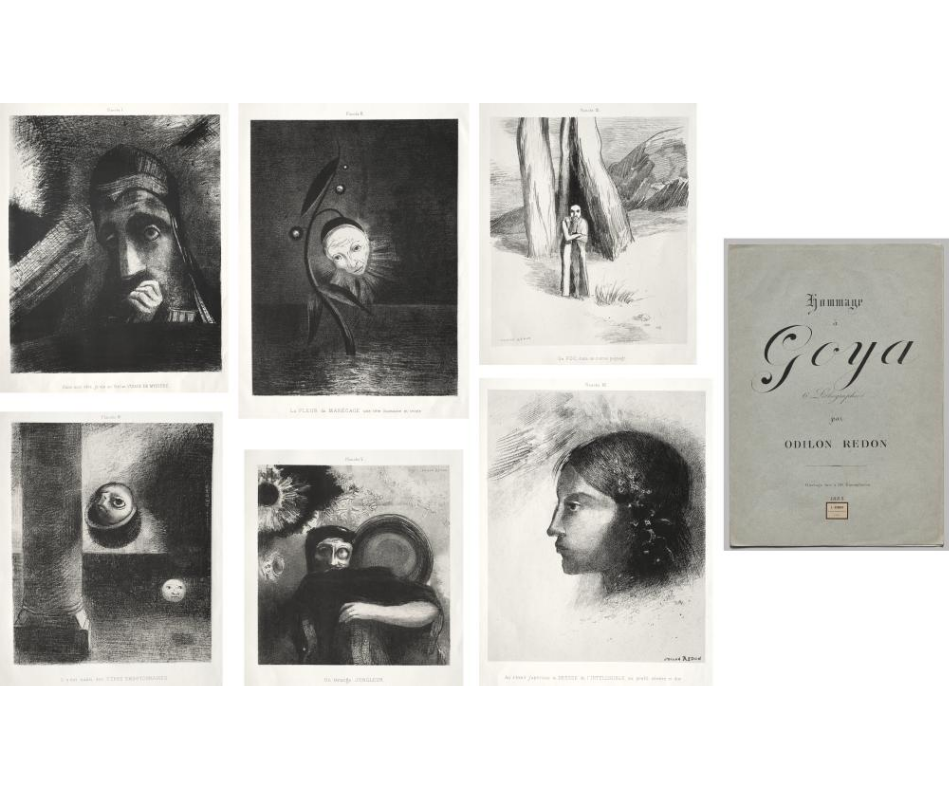
I spent a lot of hours in this show, it’s on the main floor just inside the front entrance in a quiet room dedicated to just this exhibit at the moment. So for those of us in love with Redon’s work, it is an essential spiritual experience. A most rewarding investment!
Now, the CMA’s newest Redon acquisition and one they apparently are very proud of is this charcoal and black chalk rendition of Quasimodo (since two different guards pointed it out). But it certainly is one of the stand out pieces in the show.
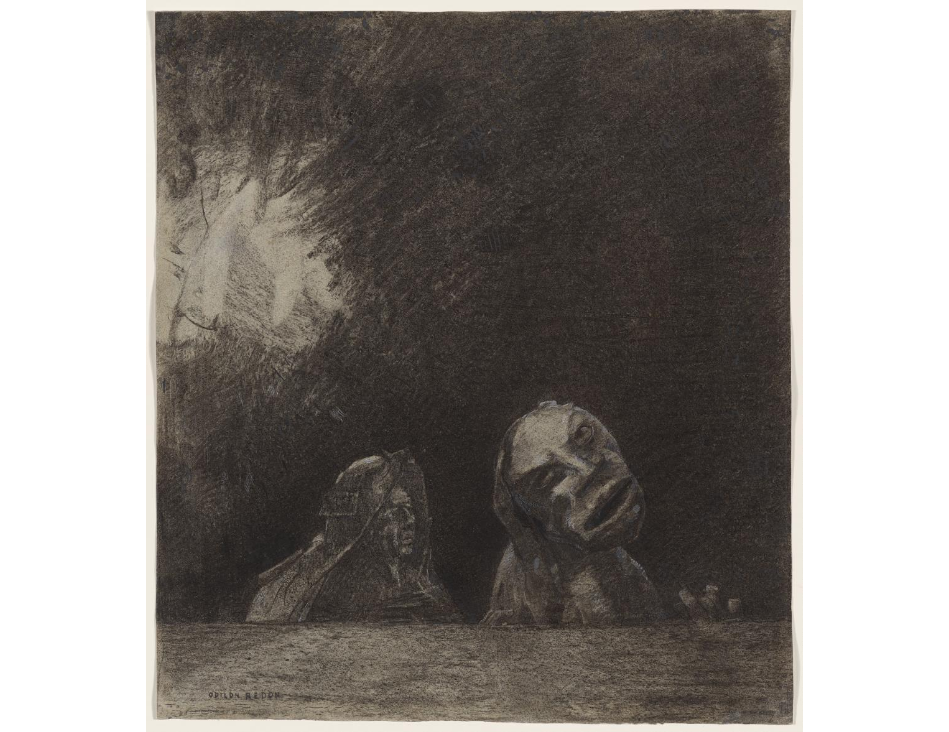
And let’s go with one of my favorites…from the noirs, the very first piece that I encountered when entering the gallery, Another lithograph entitled Light. I love the line both in defining the face and head and the line that defines the volumes and shadow. The piece alone highlights Redon’s skill in the use of lithography and maybe lays claim to Redon being one of the best in his use of the medium!
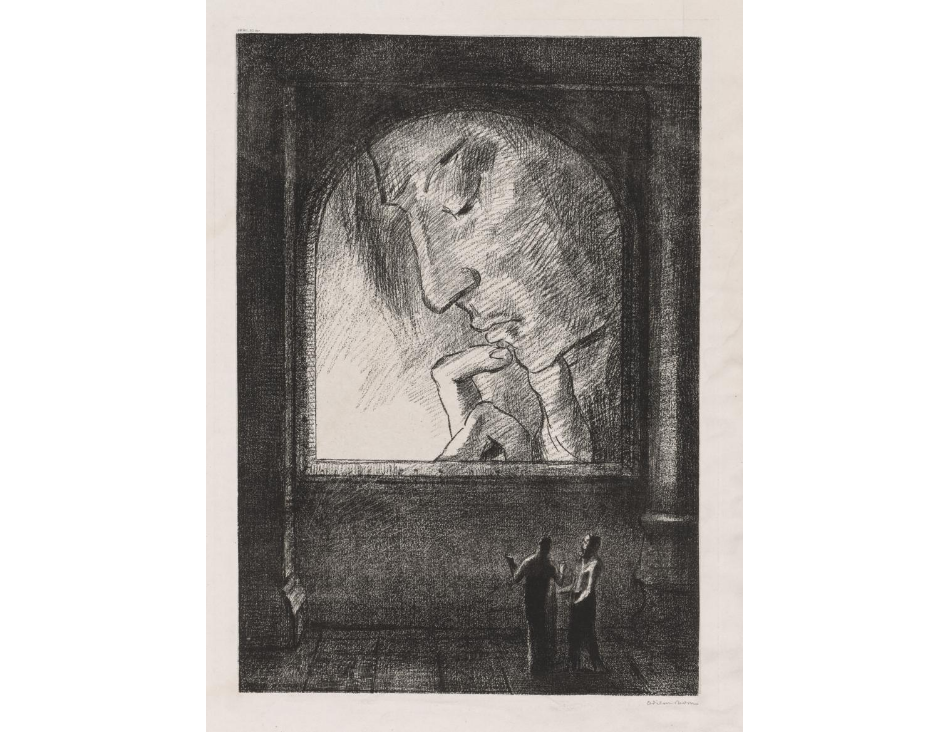
And here is one other selection from the CMA collection that is rather unusual. Not for the subject matter but for the medium. I don’t remember seeing anyone else exhibit a Redon pencil drawing…but here we have one at CMA, Melancholy.
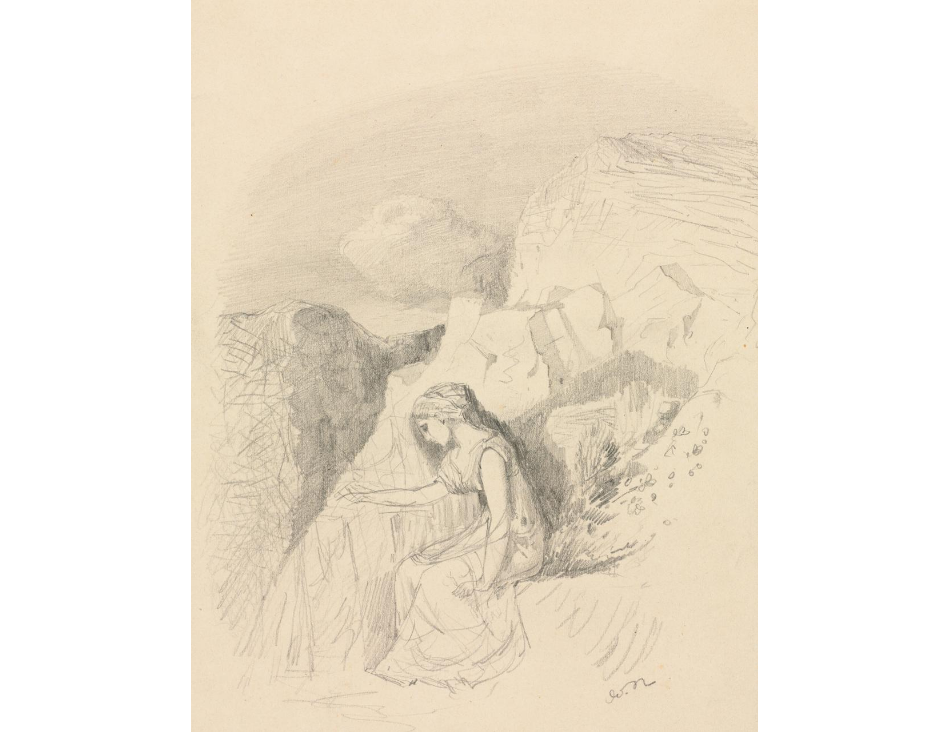
And then my personal favorite ‘painting’, one of his works where he is portraying an actual sitter as opposed to his imagined or dreamed images as shown in the other pieces. This is a pastel on paper of Viollette Heymann shown in profile with just simply amazing limning skills against a neutral gray/brown background opposed to a jungle of colored flora. And it doesn’t quite come across in this image as it does in person, but his handling of the shades and gradations in her hair is simply stunning. It can often be mind boggling to compare his more common noirs with the absolutely color bursts in his pastels or oils. Or his portraits vs. his imaginings.
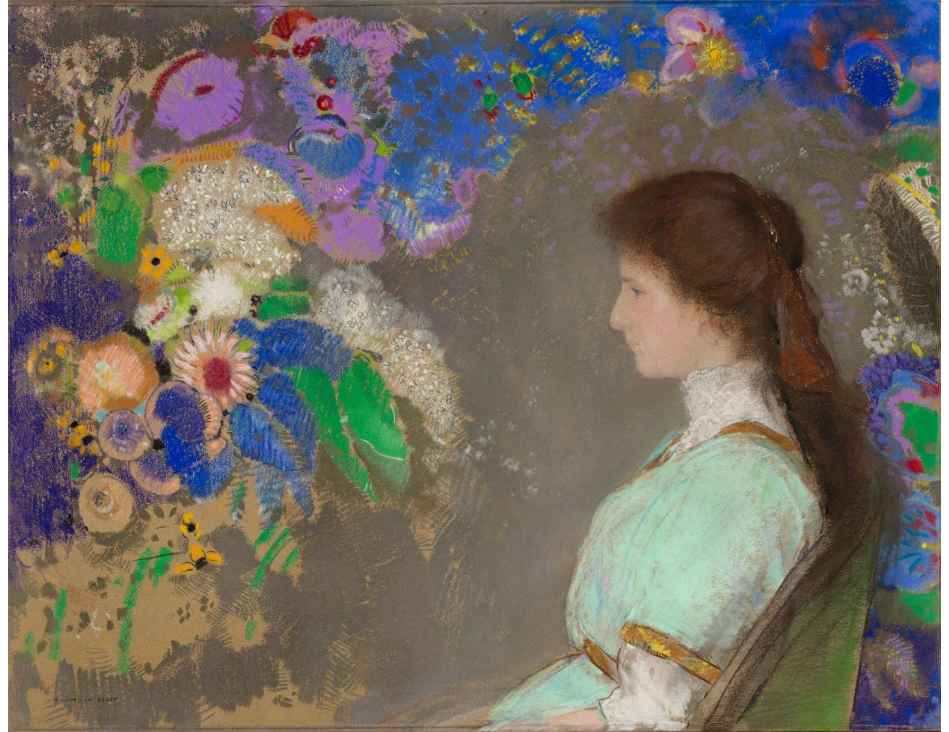
Ok, just one more image…the lithographic portfolio, Haunted House:
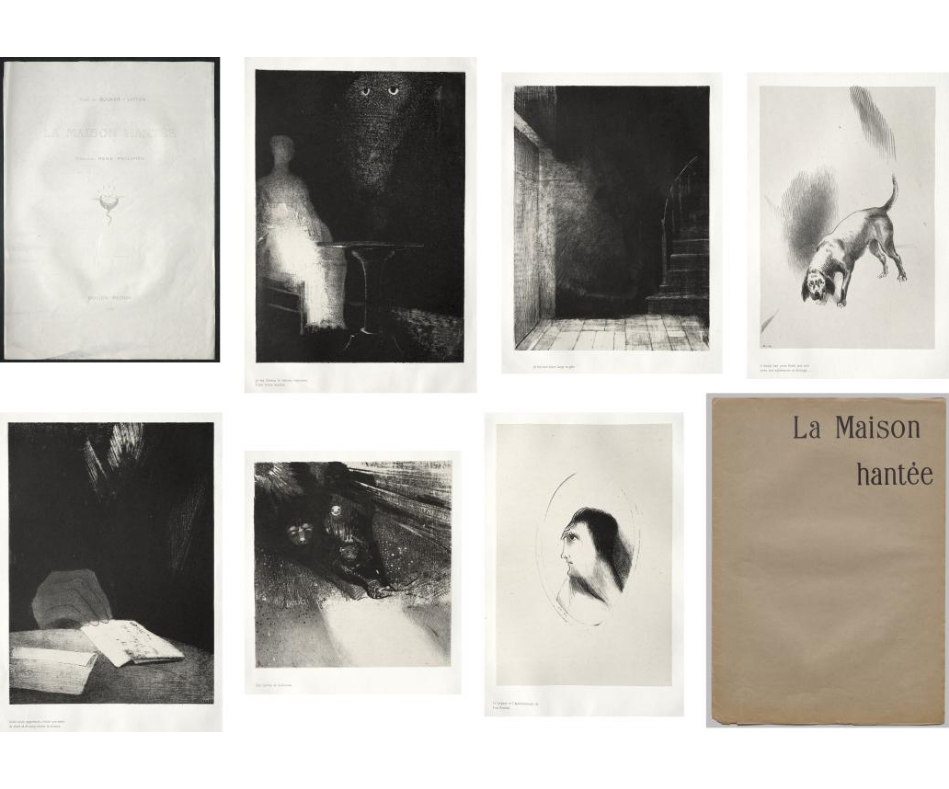
One more hint…there is an oil painting in the permanent collection that wasn’t brought into this show. But in Gallery 222 with the Monet and Picassos is another beautiul work.. I am stunned going through the photos that I took, that I didn’t snap one…sigh. So here is another download from the CMA site but if you go don’t miss this!
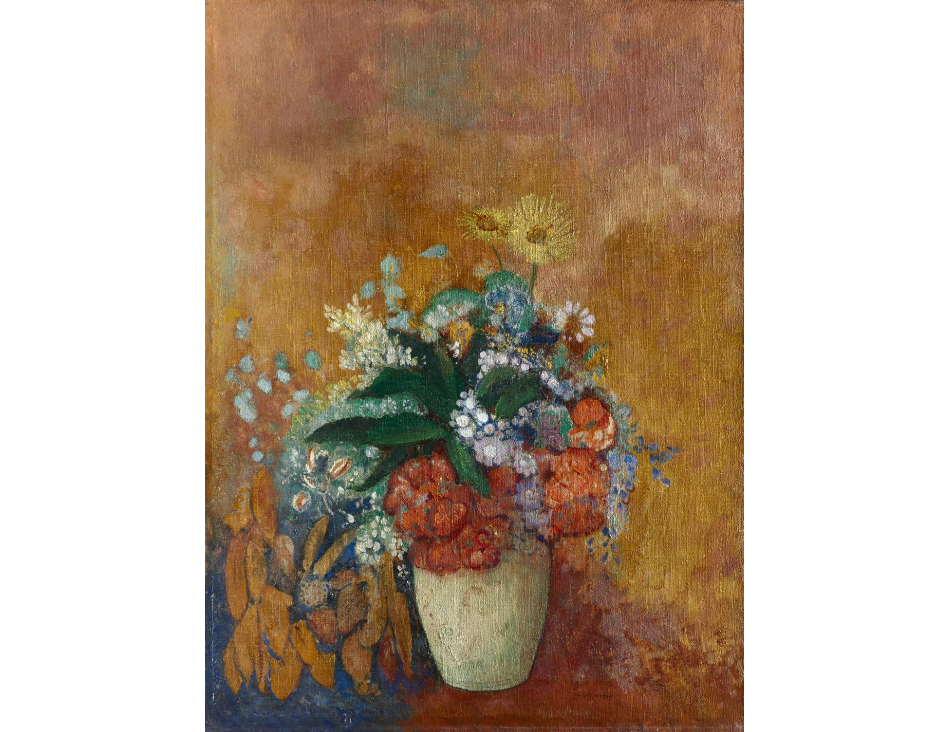
The show is free as is admission to the Cleveland Museum of Art! And the show continues through January 23, 2022. Face masks and social distancing are required. But check their website for current requirements before you go. And a quick shout out to their cafeteria…great people and very good food! The menu is a bit limited during the pandemic however but make a day of it (it can take a day so see the entire collection) and enjoy an affordable leisurely lunch in the atrium!

